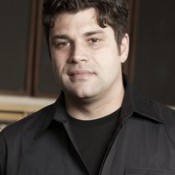From real time to slow social
My prediction for 2013 is really more of a wish — for a slow movement in social media.
Over the past two years, newsrooms have finally begun to “get” social media. Reporters are live-tweeting weather events, city council meetings, and combat coverage. Social media producers are sprouting in newsrooms large and small to curate events happening down the block and around the world.
 We turn to social media during news events for immediate updates and eyewitness accounts, constantly refreshing and trolling for every possible bit of news and commentary. There isn’t a major event (earthquake, election, bin Laden raid) that we can’t visualize through social trends.
We turn to social media during news events for immediate updates and eyewitness accounts, constantly refreshing and trolling for every possible bit of news and commentary. There isn’t a major event (earthquake, election, bin Laden raid) that we can’t visualize through social trends.
But in our fixation on immediacy, we’re missing opportunities to tell a larger story through social means. At times, we’re even perpetrating rumor for the sake of “real-time” coverage (see: Newtown shootings social media disaster). In both cases, we’re letting readers down.
In 2013, we are going to see more of a backlash against real-time rumor-mongering and a move to mine social channels for more substantive narratives. We’re already seeing glimmers of this approach:
The New York Times maintains a catalogue of eyewitness video from Syria dating back to August. “Watching Syria’s War” goes beyond of-the-moment curation to provide context around raw video and images found from Aleppo to Damascus. The Times provides context for each YouTube clip — what is known, and more importantly what isn’t. It fosters connections between readers and reporters in hopes of advancing the story:
Do you have information or a 1st hand account of the burning of #shia religious sites in Idlib? is.gd/xHBZQL #WatchingSyria #Syria
— Liam Stack (@liamstack) December 14, 2012
The beta site Syria Deeply offers another approach to contextualizing citizen video, surfacing trends but mapping them in the context of refugee and fatality counts.
Both of these examples go beyond perfunctory retweeting and social streaming to paint a bigger picture where context is king. I challenge news organizations to think about how a “slow” social media movement could better serve our journalism and our readers in 2013.



































